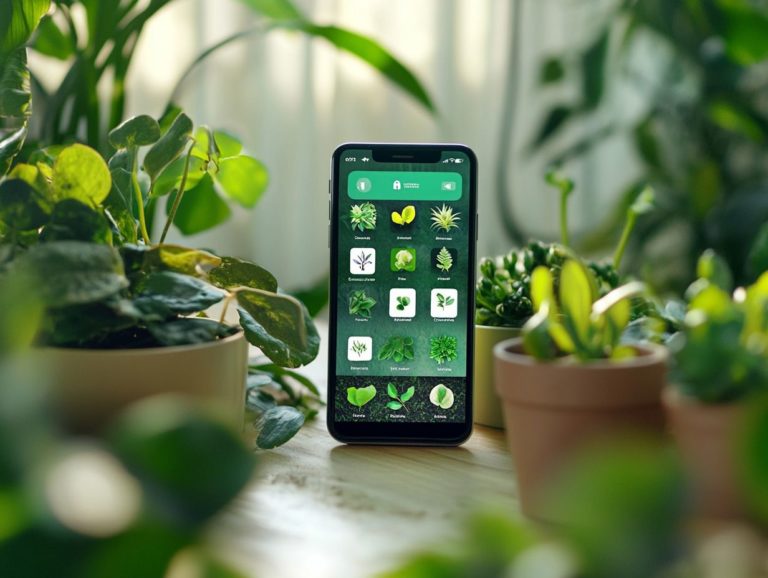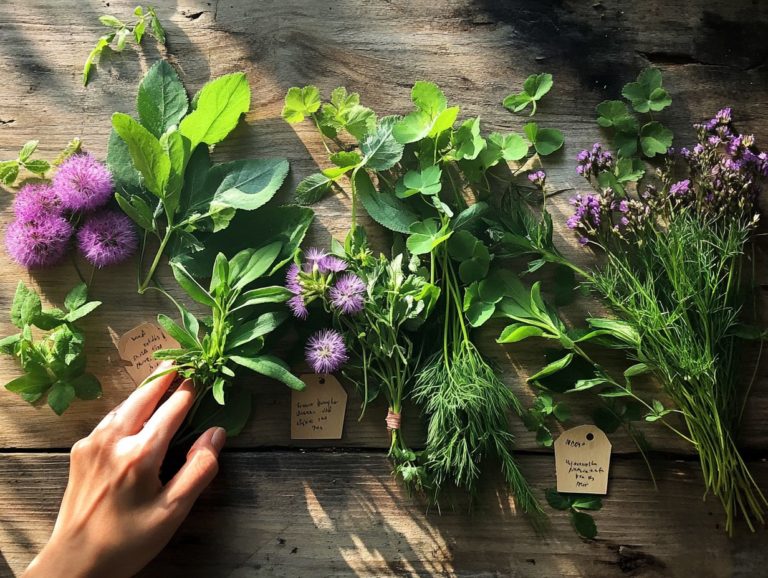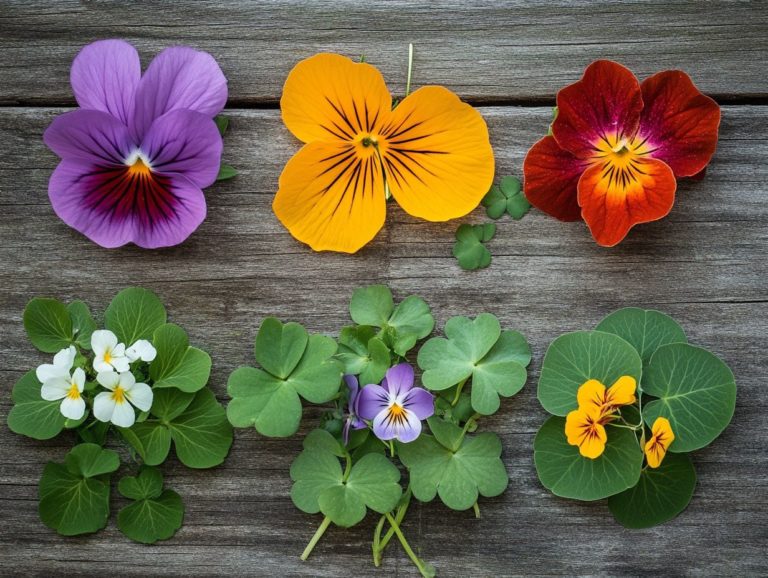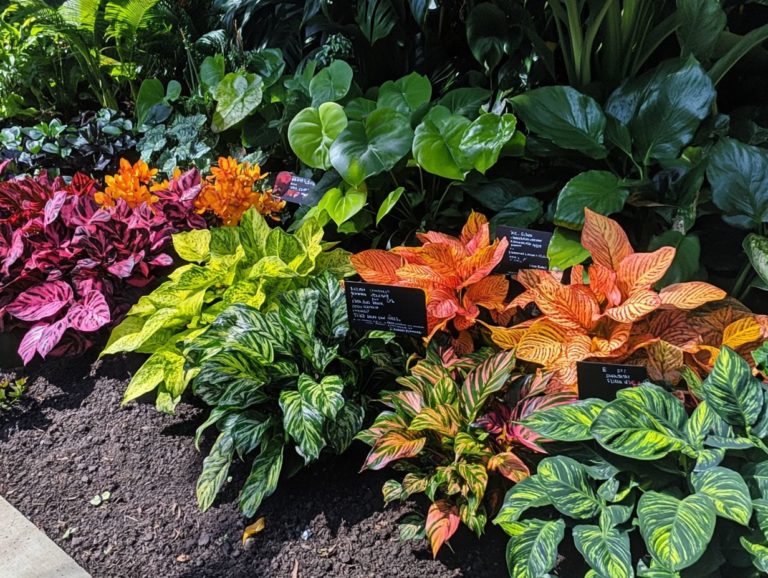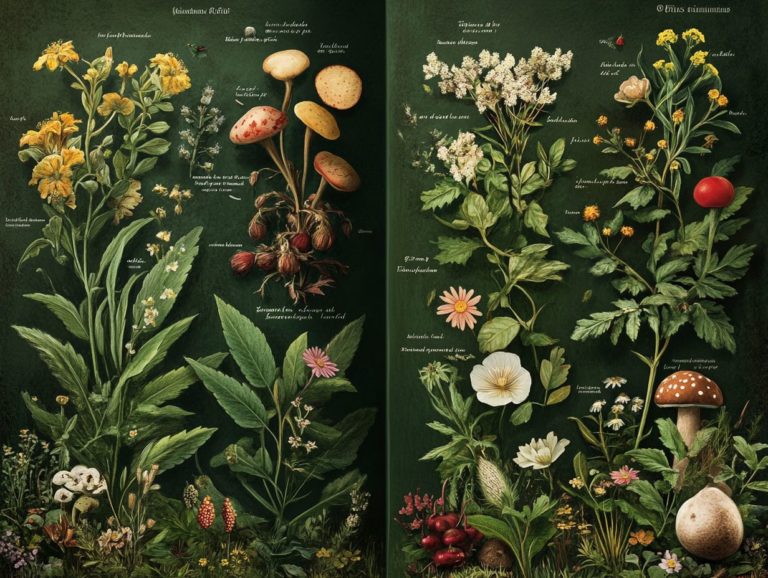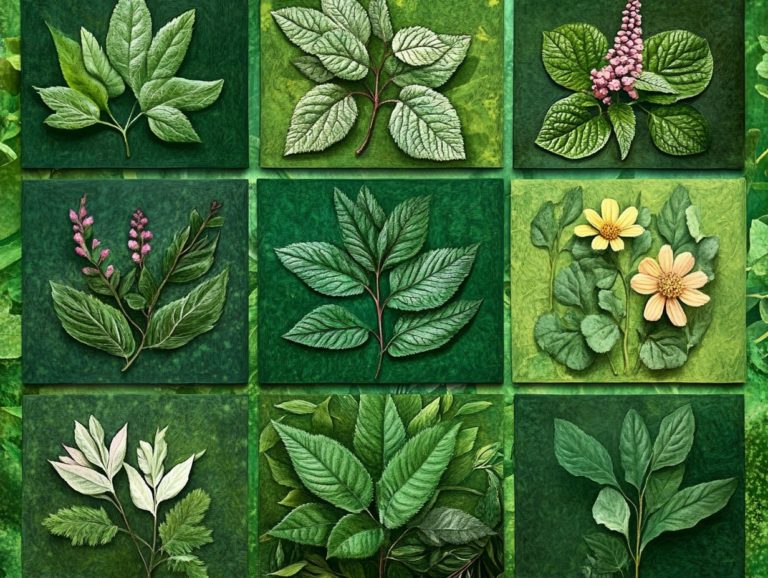Understanding the Basics of Plant Identification
Dive into the exciting world of plant identification! It’s not just a hobby; it’s a skill that connects you with nature in powerful ways.
Plant identification transcends mere hobby; it s a valuable skill that deepens your connection to the environment.
Whether you are a gardener, forager, or nature enthusiast, recognizing various plant species will enrich your understanding of ecosystems. It will also elevate your outdoor experiences.
This article delves into essential tools and techniques for identifying plants, from reliable field guides to innovative online resources.
It also highlights common plant families, the pitfalls to avoid when misidentifying, and the practical benefits of becoming well-versed in your local flora.
Join us on this exciting journey to explore plants and learn how to identify them confidently!
Contents
- Key Takeaways:
- Tools and Techniques for Plant Identification
- Common Plant Families and Their Characteristics
- Common Mistakes in Plant Identification
- Practical Applications of Plant Identification
- Frequently Asked Questions
- What is plant identification?
- Why is it important to understand the basics of plant identification?
- What are some common characteristics used in plant identification?
- Are there any resources available to help with plant identification?
- Can plant identification be done by beginners?
- Is plant identification an exact science?
Key Takeaways:
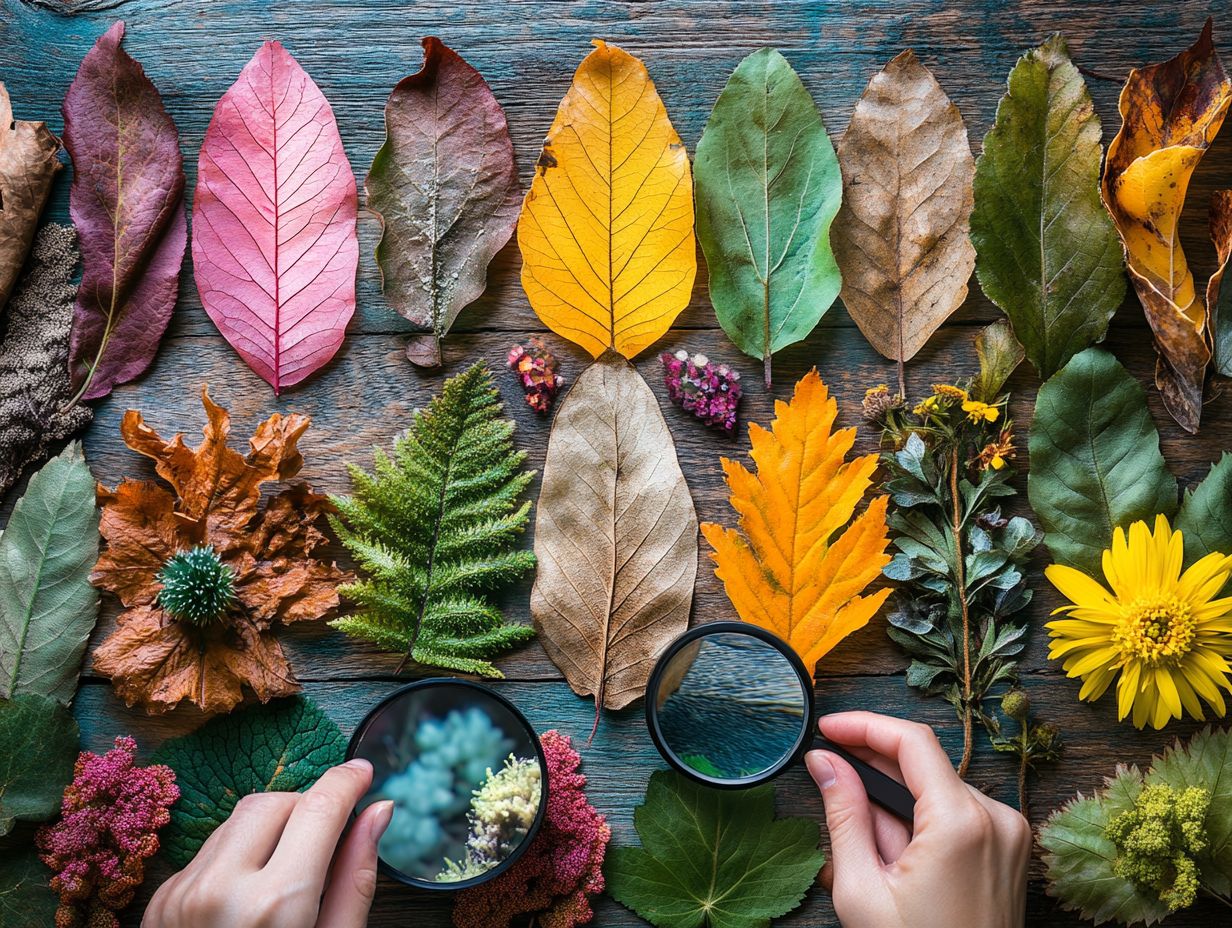
- Proper plant identification is crucial for gardening, foraging, and conservation purposes.
- Field guides and online resources, along with observing physical characteristics, are essential tools for plant identification.
- Familiarizing yourself with common plant families and avoiding common mistakes can help avoid misidentification.
Why is Plant Identification Important?
Plant identification is essential for you as an amateur botanist, helping you understand where species grow and how they interact with each other, while also deepening your appreciation for the natural world.
When you accurately identify plants, you contribute to conservation efforts, aid in foraging, and make informed choices about suitable cultivated plants, ultimately enriching your interactions with the environment.
By recognizing various plant species, you can support local biodiversity and help preserve threatened ecosystems, ensuring that unique flora continues to thrive. The identification process encourages you to learn about each plant s role in supporting wildlife, which is vital for maintaining ecological balance.
Understanding which native plants attract pollinators can significantly enhance the health of your garden, transforming it into a vibrant habitat.
Foragers depend on proper identification to distinguish edible plants from toxic ones, safeguarding their health while promoting sustainable harvesting practices. This knowledge empowers you to make informed choices that positively impact both conservation and personal well-being.
Tools and Techniques for Plant Identification
To successfully identify plants, you can leverage a range of tools and techniques, such as dichotomous keys tools that help you identify plants by answering a series of questions about their characteristics and digital field guides. These resources will not only refine your identification strategies but also elevate your confidence in the process, transforming your botanical pursuits into a more rewarding experience.
Field Guides and Online Resources
Field guides and online resources are essential allies in your journey of plant identification, providing you with invaluable educational materials and tutorials designed to elevate your skills and deepen your understanding.
Among the myriad of options at your disposal, timeless classics like the Golden Guide offer concise and engaging information, while works like Botany in a Day delve deeply into the nuances of plant families and their unique characteristics.
Digital platforms such as iNaturalist create a lively community, where you can share your observations, pose questions, and receive insights from both enthusiasts and experts. This collaborative environment not only enriches your personal learning experience but also democratizes the sharing of knowledge, making botanical manuals more accessible and encouraging meaningful engagement with the natural world.
In turn, this fosters a profound appreciation for the rich tapestry of biodiversity that surrounds us.
Physical Characteristics to Look For
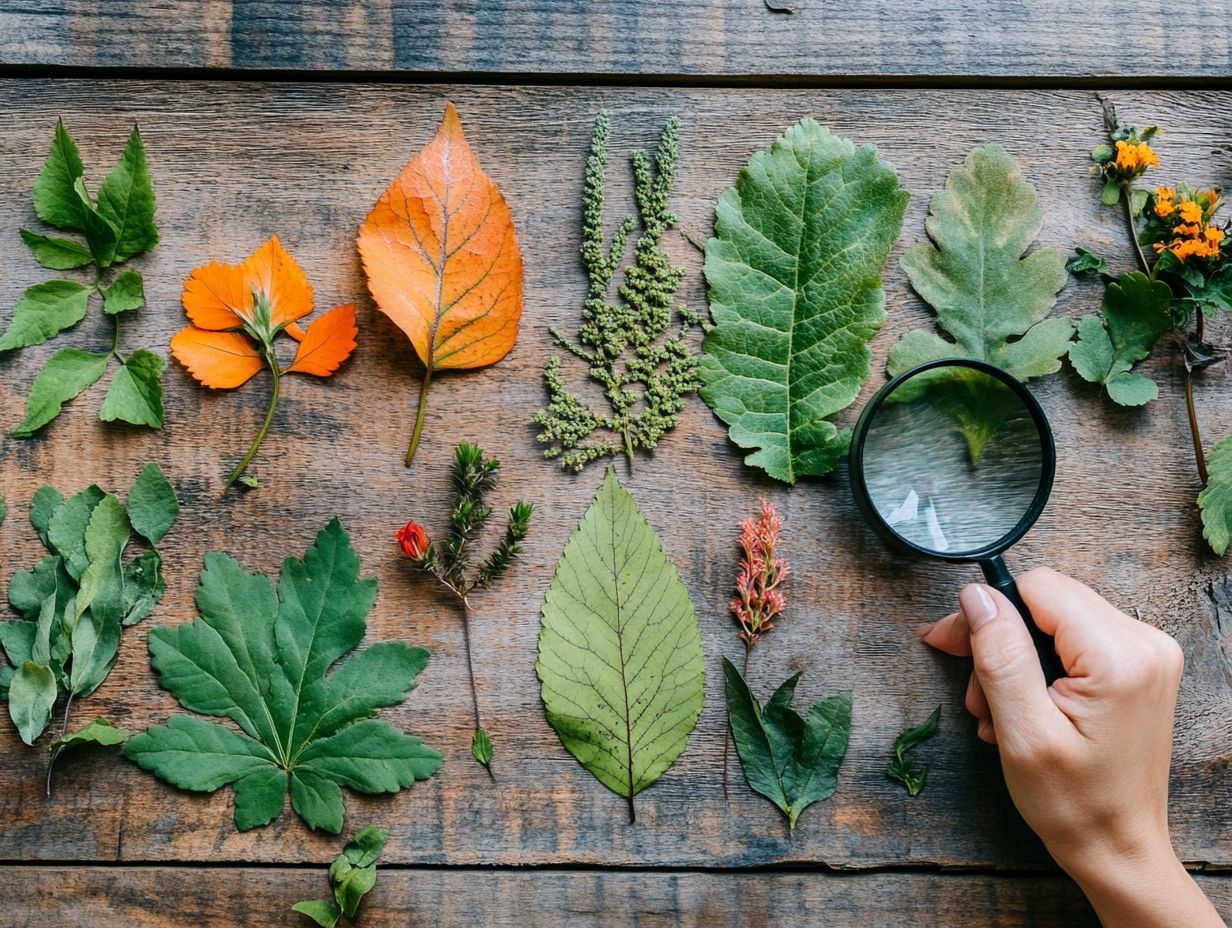
In terms of identifying plants, key physical characteristics like leaf structure, flower morphology, and overall growth patterns are essential for distinguishing between species. By closely observing the diverse shapes, sizes, and colors of leaves, you can uncover vital information about a plant’s habitat and adaptations.
Broad leaves may indicate a need for ample sunlight, while needle-like leaves suggest resilience to arid conditions. Examining flower arrangements is also very important; they can take on various shapes, such as tubular or flat, each designed to attract specific pollinators effectively.
Observing growth forms whether a plant stands tall, creeps along the ground, or sprawls out offers additional insight into its ecological role. Taking all these visual traits into consideration gives you a more comprehensive understanding of plant anatomy and significantly sharpens your identification skills.
Common Plant Families and Their Characteristics
Grasping the intricacies of common plant families, like Asteraceae and Brassicaceae, is essential for you as an amateur botanist. This knowledge makes comparing species easier and more fun while deepening your understanding of the ecological relationships within local ecosystems.
Identifying Plants by Family
Identifying plants by family is a highly effective method that enhances your accuracy and deepens your understanding of the categories that categorize various species.
This approach simplifies the identification process, allowing you to focus on broader characteristics shared among related species. This reduces the overwhelming task of sorting through countless varieties.
For example, when using plant guides, you might recognize that a particular plant belongs to the Asteraceae family a group that includes familiar faces like sunflowers and daisies. By concentrating on these identified families, pinpointing specific plants becomes much less intimidating.
This systematic approach not only enriches your learning experience but also cultivates a deeper appreciation for the incredible diversity found within each family.
Common Mistakes in Plant Identification
Common mistakes in plant identification can greatly impede your ability to accurately recognize species. It becomes crucial for you to understand these challenges and seek expert guidance to enhance your skills.
Embracing this journey will not only refine your abilities but also deepen your appreciation for the botanical world.
Avoiding Misidentification

To avoid misidentification, you should focus on rigorous observation, tap into community feedback, and engage in identification training to enhance your skills.
By slowing down and paying attention to details like leaf shape, flower structure, and growth patterns, you can significantly refine your identification process. Consulting with local experts or participating in online forums offers invaluable insights that can lead to more accurate determinations.
Join workshops or online courses today to boost your plant identification skills! This proactive approach not only builds your confidence but also deepens your appreciation for the botanical diversity that surrounds you.
Practical Applications of Plant Identification
The practical applications of plant identification span an array of fields, including gardening, foraging, and conservation. By mastering accurate identification, you can refine your practices and significantly enhance your personal experience with cultivated plants.
Uses in Gardening, Foraging, and Conservation
In gardening, foraging, and conservation, plant identification is essential. It ensures the use of local species and fosters healthy ecological relationships.
Accurate identification gives you the power to select native plants that thrive in your specific environment, minimizing reliance on chemical fertilizers and pesticides.
For foragers, telling apart safe and harmful plants is not just about safety; it s about embracing sustainability and deepening your connection to local ecosystems.
In conservation, understanding plant needs helps restore habitats and maintain biodiversity. By prioritizing native flora, you can support local wildlife, enhance soil health, and contribute to ecological balance, all while championing sustainable practices within your community.
Frequently Asked Questions
What is plant identification?
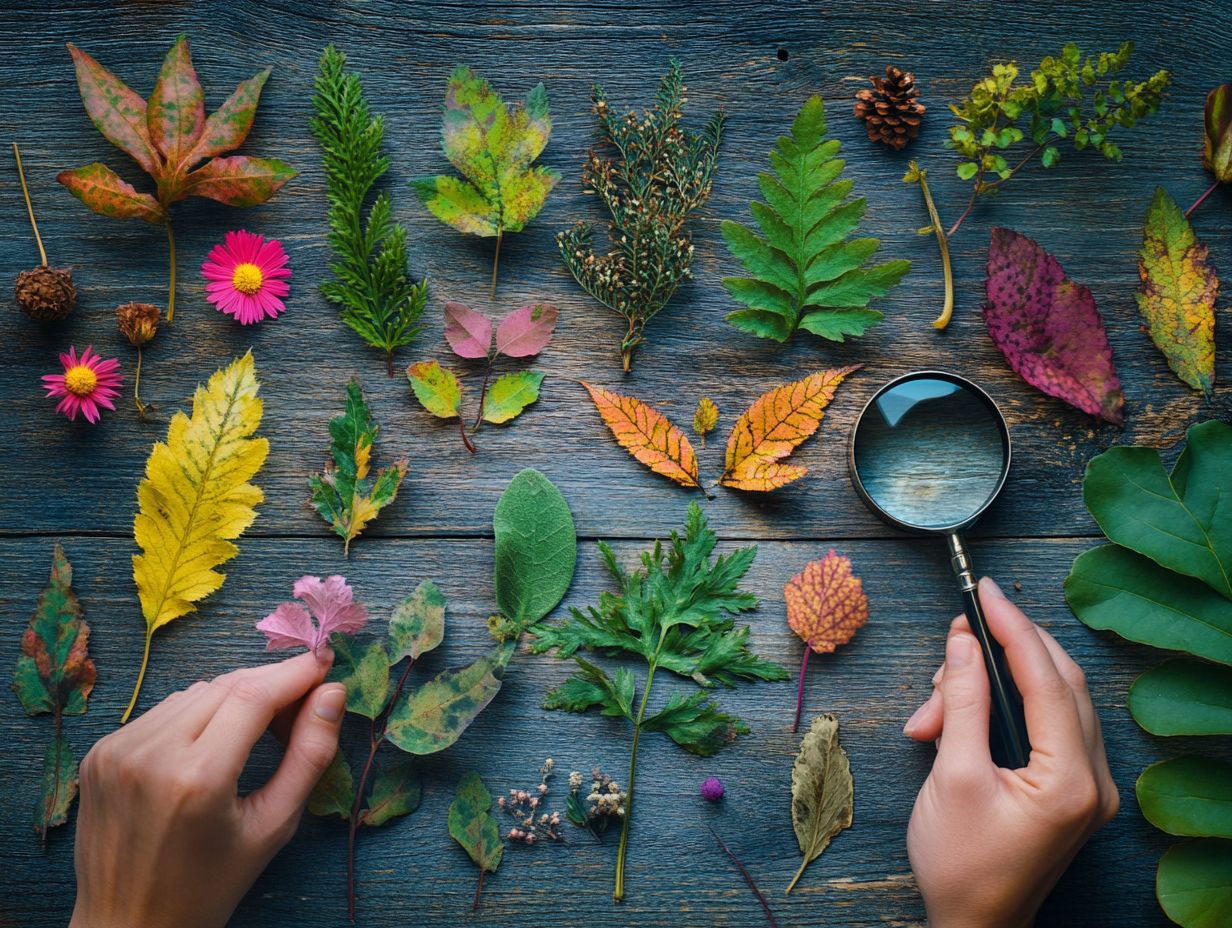
Plant identification is the process of identifying different types of plants, usually based on their physical characteristics, such as leaves, flowers, and stem structure.
Why is it important to understand the basics of plant identification?
Understanding the basics of plant identification is important because it allows you to properly identify and classify plants, which can be useful for gardening, landscaping, and scientific research purposes.
What are some common characteristics used in plant identification?
Some common characteristics used in plant identification include leaf shape and arrangement, flower color and structure, and overall plant size and shape, as well as visual traits and leaf characteristics.
Are there any resources available to help with plant identification?
Yes, there are many resources available to help with plant identification, including educational resources like field guides, botanical manuals, and online databases. There are also apps that use images and descriptions to identify plants.
Can plant identification be done by beginners?
Absolutely! Plant identification can be done by beginners, including novice naturalists. With some basic knowledge and the right resources, anyone can learn to identify plants accurately.
Is plant identification an exact science?
Plant identification can be tricky sometimes! While there are specific technical features and characteristics that can help with identification, there can also be variations within a species or similarities between different species, making it challenging at times. This often leads to identification mistakes and requires a holistic approach to improve identification accuracy.

